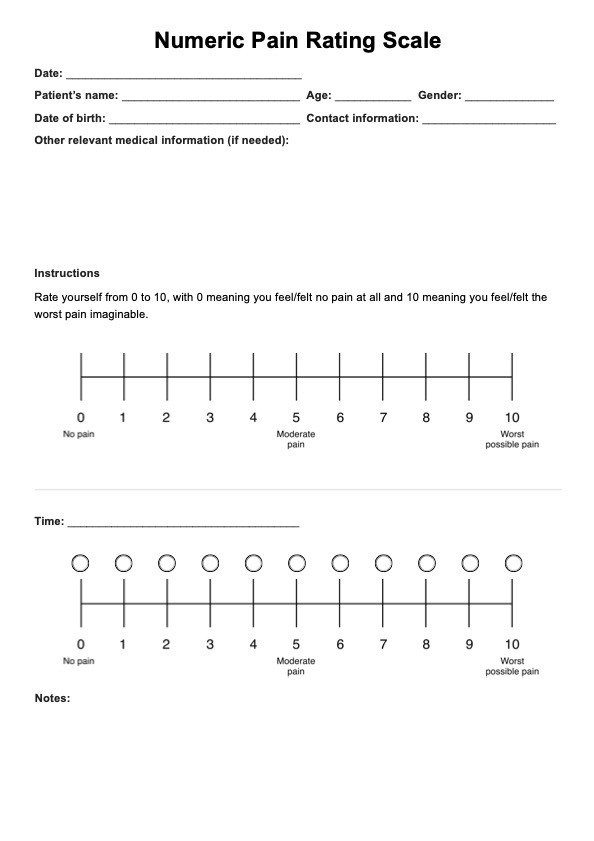The patient can dictate the number ratings they have for themselves to a companion and have them select their number ratings. If they don’t have a copy of the scale at the moment, then you can do it on your end by answering the scale based on your patient’s answers. That’s how easy it is to use.

Numeric Pain Rating Scale
Use this free, printable Numeric Pain Rating Scale to gauge the pain of your patient and monitor their condition over time.
Numeric Pain Rating Scale Template
Commonly asked questions
The ratings will depend on the patient. The practitioner should simply get the average of the ratings and then compare that with the rating for the patient's current level of pain. The average score and the rating for the pain the patient is currently feeling should help determine the treatment plan.
In a sense, yes. This pain scale relies on the patient’s assessment of their pain levels. You will be basing the treatment plan based on their ratings. You will also adjust according to subsequent results if you reissue this test to them. The rating scale has number range designations, giving it a semblance of objectivity. Your decisions regarding their plan will be based on these ranges.
EHR and practice management software
Get started for free
*No credit card required
Free
$0/usd
Unlimited clients
Telehealth
1GB of storage
Client portal text
Automated billing and online payments











